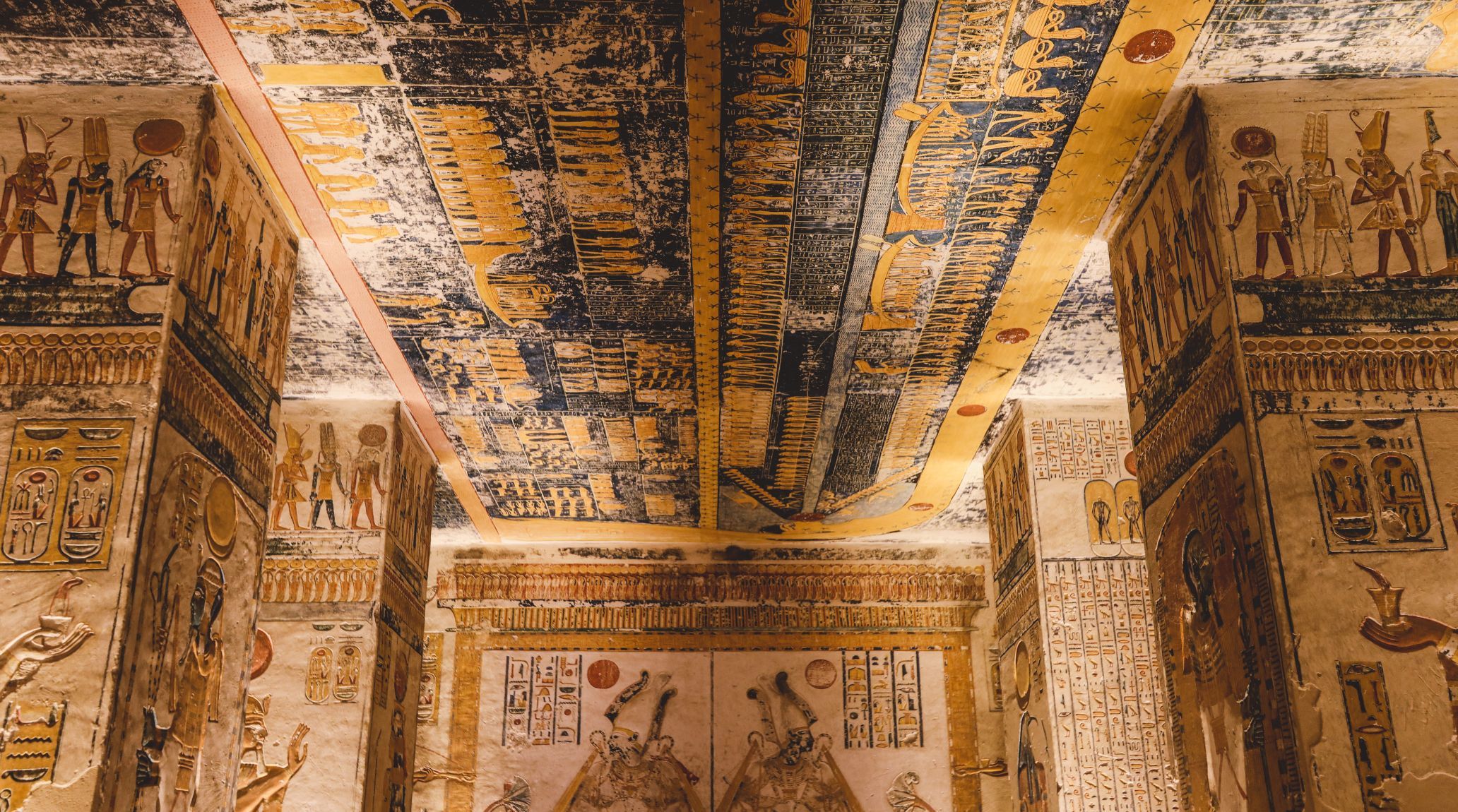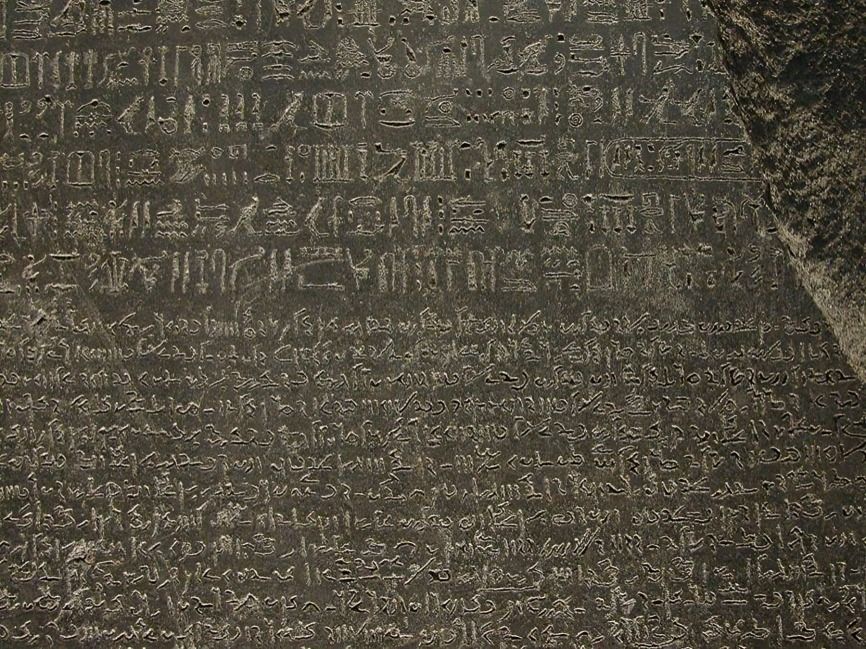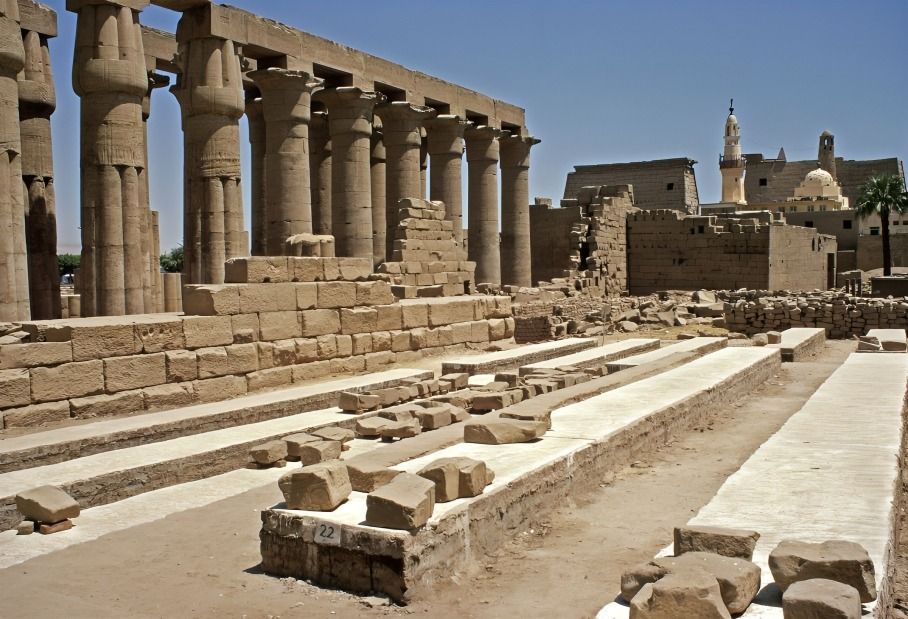
“
The art and architecture of ancient Egypt stand as powerful symbols of a civilization that has inspired countless generations. In this article, we present 20 fascinating facts about Art and Architecture of Ancient Egypt.1
1
”
Egyptian art and architecture are characterized by their rich symbolism, ceremonial functions, and mastery of stonework. Architecture evolved into grand stone monuments dedicated to kings and gods. 1
Egyptian art is crucial for understanding ancient Egyptian culture, beliefs, and history. It reflects their deep faith in the afterlife and their reverence for kings, who were considered living embodiments of their gods. 2
Built during the Fourth Dynasty, the Great Pyramid of Giza, originally 146.6 meters tall, is the largest and oldest of the three pyramids on the Giza Plateau. It was constructed using an estimated 2.3 million blocks of stone and was the tallest man-made structure.3
Ancient Egyptian writing, known as hieroglyphs, consists of over 700 symbols. This script was used for religious texts, official inscriptions, and monumental art, providing valuable insights into their language and culture. 4
The Karnak Temple complex, dedicated to the god Amun, is one of the largest religious buildings in the world. It was constructed over 2,000 years and includes colossal statues, obelisks, and intricate reliefs depicting Pharaohs and gods. 5
The Great Sphinx, with the body of a lion and the head of a Pharaoh, is believed to represent Pharaoh Khafre. Carved from a single piece of limestone, it is one of the most iconic and enduring symbols of Ancient Egypt.6
The temples at Abu Simbel, built by Ramses II, are carved into a mountainside and feature four colossal statues of the Pharaoh. These temples were relocated in the 1960s to save them from rising waters caused by the Aswan High Dam.7
Designed by the architect Imhotep, the Step Pyramid of Djoser at Saqqara is considered the earliest colossal stone building in Egypt. It marked a major advancement in architectural design, transitioning from mastabas to a multi-tiered pyramid structure. 8
Ancient Egyptian tombs were adorned with vibrant frescoes and paintings depicting daily life, rituals, and the afterlife. These artworks were meant to provide the deceased with comfort and sustenance in the afterlife. 9

Discovered in 1799, the Rosetta Stone was key to deciphering Egyptian hieroglyphs. It features a decree issued in 196 BC in three scripts: Greek, Demotic, and hieroglyphic, enabling scholars to unlock the language of ancient Egypt.
Tall, four-sided, narrow monuments with a pyramidal top, obelisks were originally erected in pairs at temple entrances. They were inscribed with hieroglyphs commemorating the Pharaoh and were often made from a single piece of stone. 10

The Temple of Luxor, dedicated to the Theban triad of Amun, Mut, and Khonsu, features an impressive avenue of sphinxes and is known for its grand colonnades and intricate reliefs depicting the Pharaoh’s military victories.
Unlike the smooth-sided pyramids of the Old Kingdom, Middle Kingdom pyramids, like those at Dahshur, often had a more complex internal structure and were surrounded by extensive mortuary temples. 11
Under Akhenaten, art became more naturalistic and expressive, departing from traditional conventions. The Amarna Period art featured elongated forms and intimate family scenes, reflecting the religious upheaval of the time. 12
Elaborate masks were placed over mummies to ensure the deceased’s identification and protection in the afterlife. The most famous example is the gold mask of Tutankhamun, which showcases intricate craftsmanship and symbolism. 13
Hatshepsut’s mortuary temple at Deir el-Bahari is renowned for its unique terraced design and extensive use of colonnades. It was built into the cliffs of the Valley of the Kings, integrating architecture with the natural landscape.14
Statues of Pharaohs and deities were often colossal, intended to convey the grandeur and divine nature of their subjects. The statues of Ramses II at Abu Simbel and the seated statue of Memnon at Thebes are prime examples. 15
Akhenaten’s Aten Temple, dedicated to the sun disk Aten, was an architectural innovation. It featured open-air spaces and a departure from traditional enclosed temples, reflecting the Pharaoh’s monotheistic religious beliefs.16

The Hypostyle Hall at Karnak is one of the largest and most impressive architectural spaces of ancient Egypt. Its massive columns, intricately decorated with hieroglyphs, create a forest-like effect and were used for grand ceremonies.
The Book of the Dead is a collection of spells and prayers placed in tombs to help the deceased find their way in the afterlife. Its detailed illustrations and instructions show how central the afterlife was in Egyptian culture. 17


